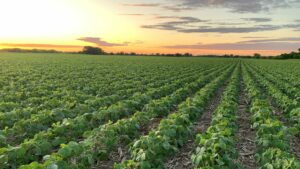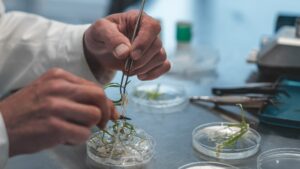Are you delivering? There’s a lot of pressure to meet the expectations of farmers and capture market share in today’s competitive environment. Seed World sits down with select farmers to get their feedback.
MEET THE PANEL:
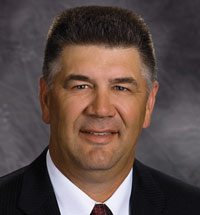 |
Greg Svenningsen farms about 1,800 acres of wheat, corn and soybeans in the southeast corner of North Dakota. He serves on the state Wheat Commission and as a director on the Dakota Plains Co-op board. (GS) |
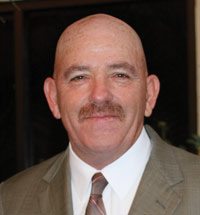 |
Scott Averhoff owns and operates SARA Farms with his wife Arleen in the blackland prairie of Texas. He grows corn, wheat, cotton, sorghum and runs a cow/calf operation. (SA) |
 |
Chris Tallman farms approximately 5,000 acres in eastern Colorado, growing mostly wheat. He also plants some sorghum and sunflowers. (CT) |
 |
Roger Zylstra is president of the Iowa Corn Growers Association and farms approximately 700 acres of corn and soybeans in Lynnville, Iowa. (RZ) |
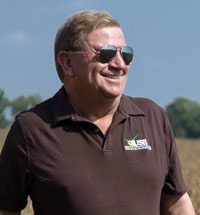 |
John Motter farms about 700 acres of corn and soybeans at Motter Farms in Jenera, Ohio. He serves on the United Soybean Board and the Ohio Soybean Council’s Board of Directors. (JM) |
Seed selection can be an overwhelming task for some farmers. Unfortunately, unmet expectations can lead to disappointed customers and fewer repeat customers, leaving seed suppliers guessing what went wrong. We asked farmers from various regions of the country about their habits and preferences when dealing with suppliers, and found some pretty common trends — no matter the size, type or location of operation.
What do you look for when choosing a seed supplier?
GS: I like to see good service.
RZ: One of the first things we look for is quality product. We want something that consistently performs for us, but service is also extremely important. We want to form a long-term relationship with the dealer.
CT: Variety trial results are how we make most of our decisions. We can gather all that data at the end of the year and see the yields and other qualities. That’s probably 80 percent to 90 percent of how we make our decisions, but we also work with local dealers who help us find a good product and who are very competitive on their pricing.
Would you say it’s about a balance of several factors?
SA: It’s just like any business. We look for return on investment. With corn, there are a lot of variables in seed costs. We’re looking for agronomic strengths that are suited to our area and that are combined with useful technology traits. You also factor in the cost versus the benefits, as well as the service.
How can suppliers offer exceptional service to their customers?
JM: A current seed sales representative I work with spent half a day last year with me just looking at crops and trying to understand the ground I’m farming so he can help me pick proper hybrids. That’s service.
How are those needs different when selecting a new seed variety?
SA: I’ve had companies that set aside some of the sales rhetoric and start talking about what is in the science of their seeds.
CT: I like to see on-farm testing. With wheat companies, a lot of them do participate in on-farm testing, but the sorghum and sunflower suppliers don’t as much. If we can see 10 different varieties planted right up the road that received similar rainfall, it really helps us make a decision.
When you have a performance issue, how can a supplier best react?
JM: I had a field where something was definitely wrong agronomically, and my sales representative sent agronomists who took soil samples and did tissue tests. He was just as curious as I was. It’s most important that they work with us to figure out what the issue is and how it can be resolved.
How have companies fallen short in meeting your needs?
SA: In short, it’s usually just their business tactics — things like pricing schemes and over-complicated ways to order. I understand why they do it, but I don’t want to play games.
JM: I remember a time when we had an emergence issue in a soybean field and the dealer came out to look at the field and tried to say it was because of how it was planted. I asked him about the beans that looked good planted right beside the others — knowing they were a competitor’s seed, planted the same way, on the same day. He didn’t want to admit there was a problem with his seed, and didn’t try to make it right.
Have you ever had an issue when a particular company couldn’t supply your order?
CT: A few times, but most seed dealers I know will bend over backwards to get us what we need. Usually we can work something out, even if it takes a few extra days for them to ship it in from Missouri.
Do you prefer to buy your seed from one supplier or multiple sources?
CT: We buy mostly from one supplier because if there are issues with performance, we can go to them the following year and see what deal they can make with us. With multiple suppliers, it isn’t as easy to do that.
SA: This year, we purchased seed from two different companies to source what we needed. It’s about finding that sweet spot. It all comes back to getting the best return on investment with the varieties we need.
What are the disadvantages to dividing up your order?
RZ: As a farmer with less than 1,000 acres, I have to decide how much of my business to give to one company because the volume discounts add up significantly.
CT: That’s where the idea of economies of scale comes in.
What else might impact your decision to source from multiple suppliers?
JM: I use two companies because there is a new trait on the market with two companies offering it. I want to have a relationship with both of them as a United Soybean Board director.
GS: Our local co-op handles different companies, which works well because I don’t have to go out and source different companies. I have a variety of selections within the cooperative.
Does it make a difference if you’re working with a large, national supplier or a more local company?
CT: It’s what makes the most economic sense. If I have to go to a national dealer to get a competitive offer, that’s what I do. But if the local company can offer me the same deal, I’d probably go with him because he’s in my community and I want to support that.
What are the benefits of using a smaller, regional company?
SA: We’re in a fringe area for growing corn. A lot of major companies don’t develop hybrids for our area, so I tend to lean toward more regional companies that concentrate on the agronomics suited specifically to our growing region.
GS: Regional seed might perform better because it’s more suited to this particular climate. Larger companies’ seed is more mass produced, so it’s less specialized.
How do perks from companies impact your decision?
CT: Incentives can be nice. Some have programs where you earn points that you redeem for gift cards or other things. They’re OK, but it doesn’t make much of an impact.
SA: I know some companies are catering to those large orders, offering vacation packages or other things like that. Our farm isn’t really at the scale to benefit from most of those types of things, but we pay for it, because all those things have a cost.
JM: The biggest perk that affects my decision is a price discount. Of course, you might also get a hat or a jacket, and those are nice, but I can buy those things. I have to consider what that hat is really costing me. There’s no such thing as a free hat.
So the “thank-you” gift or discount after you’ve made a purchase isn’t as strong a motivator as other discounts?
GS: Generally, I select a variety first, and worry about programs later, but I don’t like most programs because you’re overcharged on the front end in exchange for a benefit on the back, such as a rebate. I’d rather have the discount up front.
CT: If they can sell me the product cheaper and not give me those perks, I’d prefer they do it that way.
What other factors do you consider?
JM: We have to remember that we’re not just growing soybeans, we’re growing oil and meal. If I’m only concerned about yield, I’ve left something on the table. I also can’t just shop oil content or protein levels and ignore yields. I need to be able to get a better quality bean and have competitive yields while doing so.
So, how can seed suppliers help?
JM: Communication. A lot of growers look at a seed brochure and try to pick the highest yield because they don’t feel rewarded for oil or protein contents.
RZ: From my perspective, it’s really about relationships and information flow. Access to information is one of the biggest challenges we face.
Melissa Shipman
Product Performance is Critical to Large FarmersEvery five years, Purdue University’s Center for Commercial Agriculture conducts a large commercial producer survey, which measures how farmers make decisions, information and buying preferences, customer loyalty and attitudes toward growth. Julie Deering |



